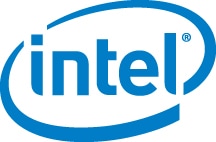August 21, 2019
4 Steps to Prepare for UEM
Unified endpoint management tools can simplify and streamline device management — for organizations that are ready to implement them.

Most business and IT leaders who I speak with understand the benefits of unified endpoint management tools. They get that UEM can help them streamline management across different device types, give employees self-service access to apps and allow push-based and instant delivery of policies and updates. Further, the time savings that result from UEM can lead to accelerated improvements in other parts of the enterprise IT environment.
But these business and IT leaders often say that they’re simply not ready to implement UEM. And here’s the thing: They’re right.
While UEM is clearly the future of device management — and it has significant benefits to offer today — organizations must take certain steps within their existing IT environments to take full advantage of the model. Here are four things organizations should do to get ready for UEM.
1. Move to a Modern Operating System
It’s a bit surprising how many businesses still haven’t moved to Microsoft Windows 10. But really, the first step in preparing for UEM is to move toward modern operating systems, such as Windows 10 and the latest versions of macOS, iOS, Android and Chrome OS. These operating systems are built to allow for applications to be pushed out centrally. Without this capability, IT departments must essentially touch every device running in their environment to manage them. Embracing modern operating systems is the first step in paving the way for UEM capabilities.
2. Move to Cloud IAM
Many organizations, especially those that haven’t yet made significant strides with cloud software, still use on-premises Active Directory. On-premises identity and access management (IAM) tools don’t authenticate well against cloud services and aren’t a great fit for organizations seeking to deploy UEM solutions. By embracing cloud IAM tools, companies make their directories more dynamic and make it easier for users to request access to cloud-based resources.
3. Implement New Security Tools
UEM should simplify and enhance cybersecurity, but some organizations consider security a factor that prevents them from moving to a UEM model. Often, this is because they’re still approaching security at the level of anti-virus tools and not embracing next-generation solutions that look across the network and data stack. One tool that organizations should consider — if they don’t already have it in place — is a cloud access security broker. A CASB works hand in hand with a UEM solution as the UEM tool validates users’ identities and pulls applications from the cloud.
4. Adopt Automated Device Enrollment
Individually provisioning devices takes up a significant chunk of time, and many companies rely on partners and resellers to do it for them. (Otherwise, there would simply be no time for internal IT staffers to do anything else during a device rollout.) By embracing automated, zero-touch device enrollment programs, such as the Apple Device Enrollment Program or Windows Autopilot, organizations can free up a large amount of time. And, if they’re currently paying a third party to handle device provisioning, they may also free up a substantial amount of money. But perhaps most important, automated device enrollment delivers devices to users in a ready state to instantly connect to UEM tools. At that point, organizations — and end users — will be able to take full advantage of all the benefits that UEM has to offer.
This blog post is brought to you by:

